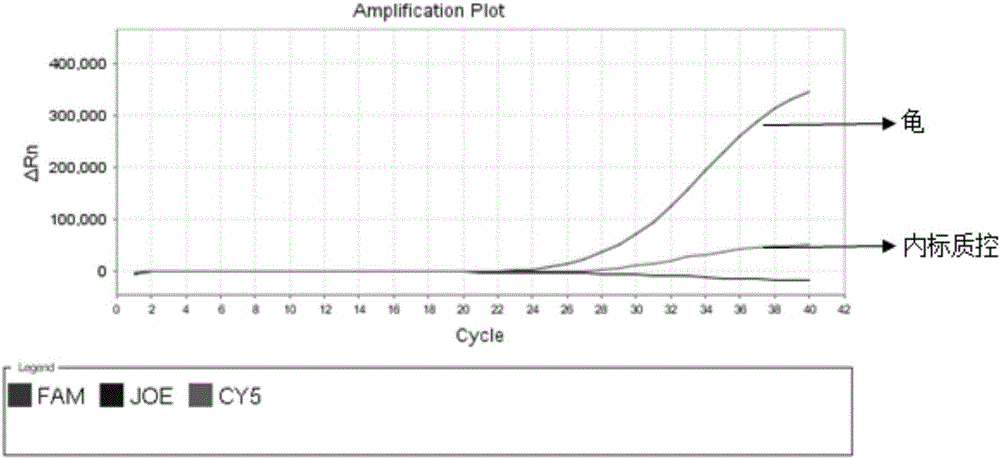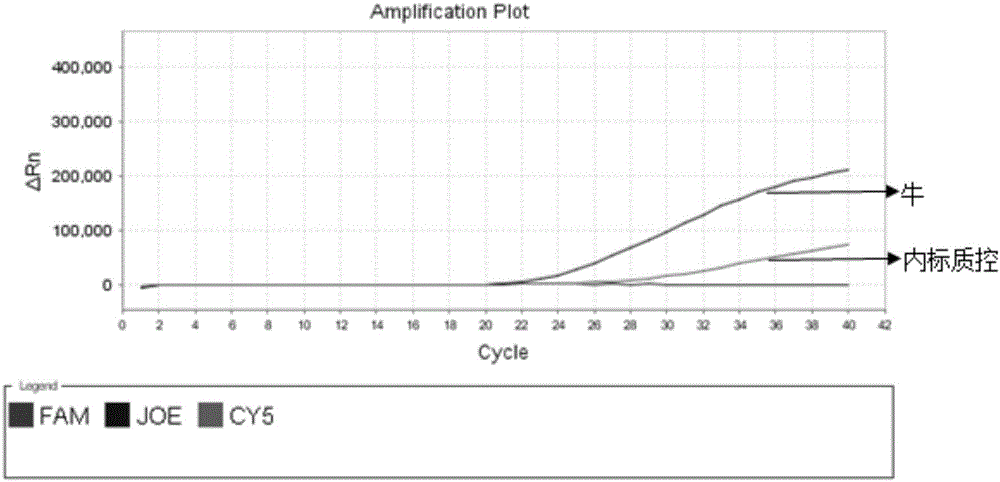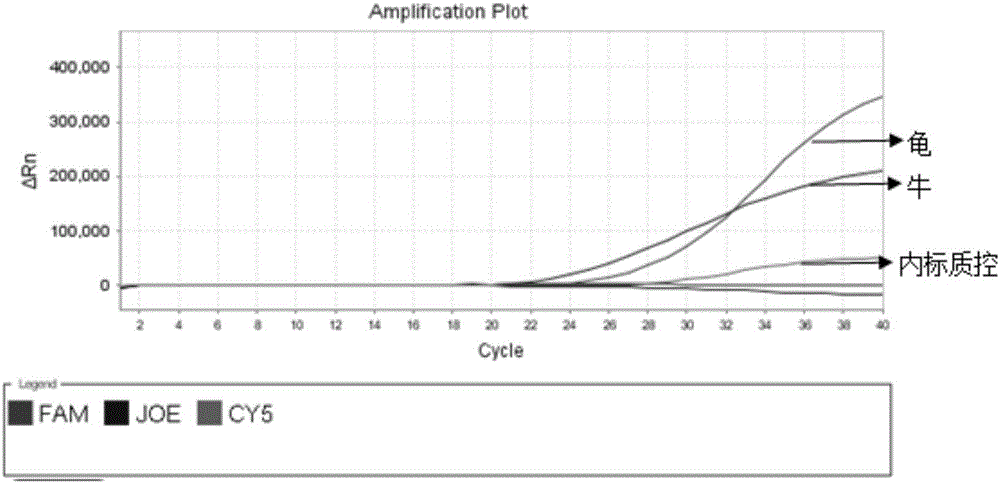Turtle and bovine derived fluorescence PCR detection primer in tortoise shell glue, probe, kit, detection method and application
A technology for detection kits and detection primers, applied in biochemical equipment and methods, measurement/testing of microorganisms, DNA/RNA fragments, etc., can solve the problem of high sensitivity and false positive rate, and the identification method cannot meet the authenticity of tortoise shell gum Requirements, inaccurate determination, etc., to achieve good specificity, overcome incomplete extraction difficulties, and high application value
- Summary
- Abstract
- Description
- Claims
- Application Information
AI Technical Summary
Problems solved by technology
Method used
Image
Examples
Embodiment 1
[0062] The DNA of the tortoise shell glue sample was extracted using the method disclosed in the patent 201410317118.7 (a kit for rapidly extracting DNA from donkey-hide gelatin and its extraction method). and concentration. The measured OD260 / OD280 values were all about 1.8-1.9, and the concentration was above 10ng / μl, which indicated that the DNA had a high purity and a moderate concentration, which met the requirements of PCR amplification.
[0063] 1. Selection of target genes and design of primers: Compared with the genome, the copy number of mitochondria in tissues is higher, and the damage degree of tortoise shell glue is relatively small after deep processing, so the mitochondrial 16SrDNA gene is preferred. The outer and inner primers are designed for turtles and cattle, and the amplified fragments are small, making it easier for the primers to bind to the target. The sequences of primers and probes are listed in Table 1.
[0064] 2. Quantitative detection of torto...
Embodiment 2
[0067] Example 2 Specificity Verification
[0068] Using the primers and probes designed by the present invention, the skins or fresh tissues of deer, turtle, fish, cow, donkey, horse, fox, mink, raccoon dog, dog, rabbit, chicken, duck, goose, camel, corn, etc. The total genomic DNA was used as a template for real-time fluorescent PCR detection to verify the specificity of its primers and probes. The results are shown in Table 3. The results show that the probes and primers designed in this study have strong specificity.
[0069] Table 3. Specificity verification tests
[0070]
Embodiment 3
[0071] Embodiment 3 Sensitivity experiment
[0072] Quantify tortoise and bovine genomic DNA to 50 ng respectively, and dilute by 10× gradient (10 -1 , 10 -2 , 10 -3 , 10 -4 , 10 -5 ), each gradient took 2.0 μL as the template amount, (ie: 10 ng, 1 ng, 0.1 ng, 0.01 ng, 0.001 ng) for real-time fluorescence quantitative PCR detection, and evaluated the detection limit of the present invention. See Figure 4 and Figure 5 , the result shows that the quantitative detection limit of this method is 0.1ng, illustrates that the method provided by the present invention has very high sensitivity.
PUM
 Login to View More
Login to View More Abstract
Description
Claims
Application Information
 Login to View More
Login to View More - R&D
- Intellectual Property
- Life Sciences
- Materials
- Tech Scout
- Unparalleled Data Quality
- Higher Quality Content
- 60% Fewer Hallucinations
Browse by: Latest US Patents, China's latest patents, Technical Efficacy Thesaurus, Application Domain, Technology Topic, Popular Technical Reports.
© 2025 PatSnap. All rights reserved.Legal|Privacy policy|Modern Slavery Act Transparency Statement|Sitemap|About US| Contact US: help@patsnap.com



